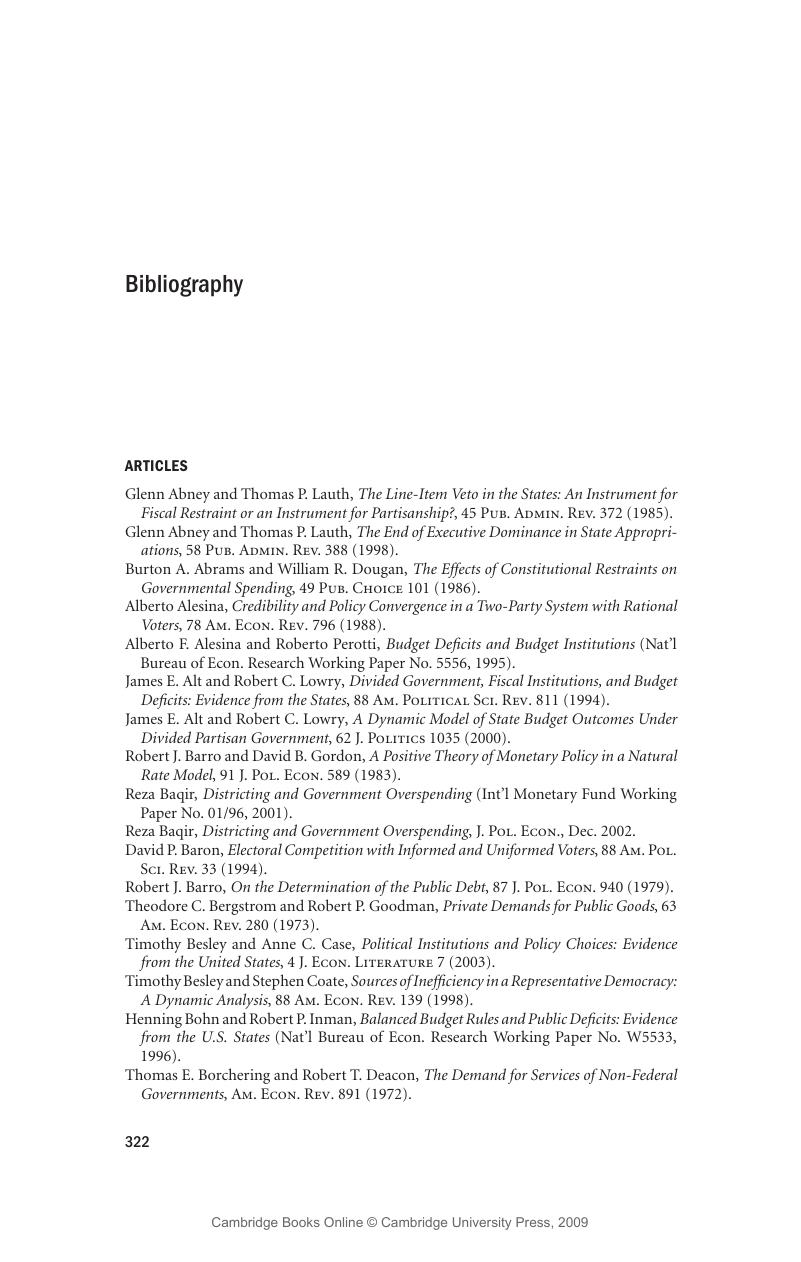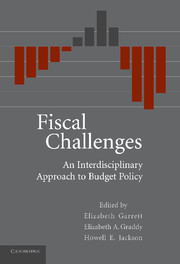Book contents
- Frontmatter
- Contents
- Preface
- Contributors
- PART ONE THE LAW AND POLITICS OF FISCAL POLICY
- PART TWO UNDERSTANDING FEDERAL DEFICITS AND PUBLIC DEBT
- PART THREE BUDGETING AND FISCAL CONSTRAINTS AT THE STATE LEVEL
- 8 Budgetary Arrangements in the 50 States: In Search of Model Practices
- 9 The Calculus of Constraint: A Critical Review of State Fiscal Institutions
- 10 When Does the Ballot Box Limit the Budget? Politics and Spending Limits in California, Colorado, Utah, and Washington
- Part Three Bibliography
- PART FOUR INTERGOVERNMENTAL ASPECTS OF BUDGET POLICY
- PART FIVE JUDICIAL POWERS AND BUDGET POLICY
- Index
- References
Part Three Bibliography
Published online by Cambridge University Press: 23 December 2009
- Frontmatter
- Contents
- Preface
- Contributors
- PART ONE THE LAW AND POLITICS OF FISCAL POLICY
- PART TWO UNDERSTANDING FEDERAL DEFICITS AND PUBLIC DEBT
- PART THREE BUDGETING AND FISCAL CONSTRAINTS AT THE STATE LEVEL
- 8 Budgetary Arrangements in the 50 States: In Search of Model Practices
- 9 The Calculus of Constraint: A Critical Review of State Fiscal Institutions
- 10 When Does the Ballot Box Limit the Budget? Politics and Spending Limits in California, Colorado, Utah, and Washington
- Part Three Bibliography
- PART FOUR INTERGOVERNMENTAL ASPECTS OF BUDGET POLICY
- PART FIVE JUDICIAL POWERS AND BUDGET POLICY
- Index
- References
Summary

- Type
- Chapter
- Information
- Fiscal ChallengesAn Interdisciplinary Approach to Budget Policy, pp. 322 - 328Publisher: Cambridge University PressPrint publication year: 2008



